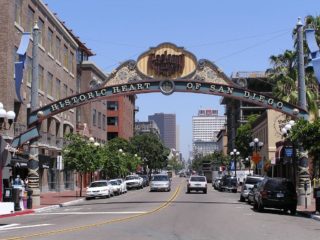
In 2017, the City of San Diego adopted three ordinances that legalized adult-use and medical commercial cannabis businesses. The City allows for a total of 40 Marijuana Production Facilities (“MPFs”) and 36 Marijuana Outlets (“MOs”). MPFs include those “engaged in the agricultural raising, harvesting, and processing of marijuana; wholesale distribution and storage of marijuana and marijuana products; and production of goods from marijuana and marijuana products” (i.e. cultivation, distribution, and manufacturing facilities). MOs include retail establishments where marijuana or marijuana products are sold to the public. Since the City website was last updated, there have been approximately 22 MO applications and 63 MPF applications submitted. The City is still accepting applications for Conditional Use Permits for both MOs and MPFs.
Applicants must go through a three-step approval process in order to receive a Conditional Use Permit (“CUP”):
- Initial Screening: This phase requires submission of the general application and other supporting documents like site plans and proof of ownership of the business. Specifically, the following documents must be submitted during this phase:
- General Application: The general application requires the applicant to share real property information and contact information with the City. The application further asks the applicant to disclose the contractor name and information for building out the premises. The general application requires signatures from the contractor, insurance carrier, building owner and applicant, so although the form is only two pages long, it may take longer than expected to actually complete given the logistics of any buildout.
- Deposit Account/Financially Responsible Party Form: This form is a simple declaration by the party who is funding the project that they’re financially responsible for the same.
- Ownership Disclosure Statement: The ownership disclosure statement requires the applicant and property owner to list their contact information and attest that the applicant has permission to use the property.
- Proof of Ownership/Legal Lot Status: The applicant must provide a copy of the deed that shows the property owner is the true owner of the land.
- Storm Water Requirements Checklist: This lengthy form helps assure the city that the build out of the location will be in accordance with the city’s performance standards for the same.
- Photographic Survey Photo and CD-R: The applicant must provide a hard copy and a digital copy of an areal view of the premises.
- Site Plan with Development Summary: The planning department provides this helpful guide that lists out the information necessary for the required site plan.
- Floor Plan: The applicant must provide a scaled diagram of the premises, including what each room will be used for, where facilities will be located, and where doors and windows will be located among other requirements.
- Elevations (if proposing exterior modifications): An elevations plan must show the sides the structure and must allow the City to see the vertical changes of the building.
- Historic Resources Information (if proposing exterior modifications): A historic review is required if the applicant is making any significant changes to the exterior of the premises. Information about this can be found here.
- Fees: Here is the information bulletin that lists all fees the applicant must pay depending on the nature of particular project.
- Climate Action Plan (“CAP”) Consistency Checklist: This lengthy document requires the applicant to walk through all building fixtures that may have an environmental impact (e.g. electrical vehicle charging, plumbing fixtures, etc.).
- 1,000-Foot Radius Map: A map of the surrounding area shows the City that the proposed premises is not within 1,000 feet of any resource and population-based city park, church, child care center, playground, city library, minor-oriented facility, residential care facility, schools, other MOs, or residential zones.
- Affidavit for MO/MPF for Conditional Use Permit: The applicant must declare that the proposed location is not within the distance requirements for any residential or sensitive use area. This form must be signed by both the property owner and the business owner.
If the City determines that you meet the requirements of the Initial Screening, your application will move on to step two.
- Submitted Completeness Review: The City will take up to 30 days to extensively review all your submitted documentation to make a decision as to whether to allow your operation to move forward.
- Full Submittal: In the final step, a Public Notice Package is required to be submitted to the City. See here. This step requires the applicant to collect information about the owners and occupants of surrounding buildings.
Assuming you clear all three phases, San Diego should issue you a coveted cannabis CUP.
The application process for San Diego will not close until the City has reached 40 MPF and 36 MO approvals. Therefore, those interested in opening a business in the City of San Diego still have an ongoing opportunity to set up shop since the City hasn’t yet met its numbers. Specifically, there are certain districts that have not received any MO applications, but 4 are allowed per district.
Even though it’s a conservative town, San Diego has been one of the pioneer cities in California for allowing both adult-use and medical cannabis. Although the City has been accepting applications for some months now, there is still a chance for business owners to gain access to this Southern California market.

